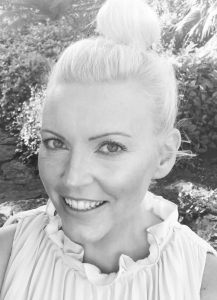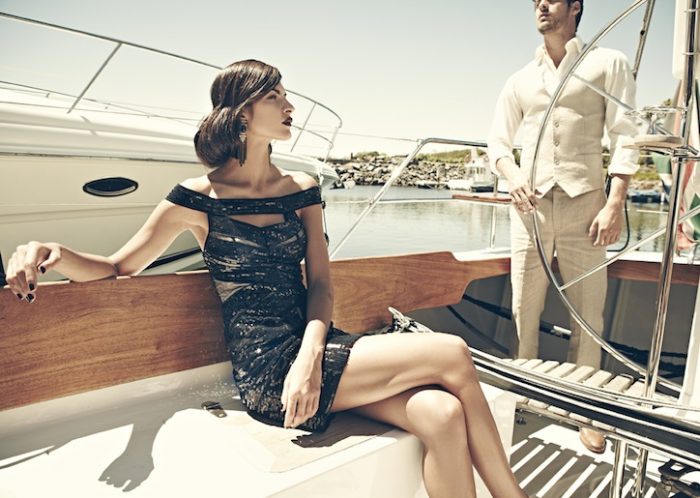An Interview with British Stylist Sophie Stevens: On Set Life And Working With Models

"I picked her because I knew she wouldn't let me down. I didn't want to risk using a new girl that might not have been able to cope with the situation."

Photos courtesy of Sophie Stevens
Sophie Stevens does not only style celebrities like Kylie Minogue and Mel C, but you will also find her forecasting trends on British radio and television. She has spent over two decades working alongside models for campaigns and editorials such as; Marks and Spencers, L'Oréal, and Cosmopolitan Magazine. We get up close and personal with the glamorous stylist to find out what it's like to be in her world that requires models to have the utmost professionalism.
FMD: Stylists are sometimes asked to take part in selecting the models, as well as style. Do you get involved in the model casting process for your projects, and if so; are there specific physical or personality traits that you look for in both male and female models?
Sophie Stevens: I am often the person choosing the model. Personality is key for me. A book can show how they look on camera, but not who they are. [When you see them in person] you might discover that they do ballet or can ski - showing that they have great balance and are possibly super bendy! Physically, great skin and great hair is always a must.
Casting also gives you the ability to check for any changes to their appearance. For example, have they had a haircut or color? It's also a perfect opportunity to have a casual chat and a giggle with the models. Just to gauge what kind of personality they have. Lastly, I always reconfirm their stats with them. Often shoe sizes etc. can be incorrect in a model's book, and this can really make or break a shoot if you don't have the correct sizes.
FMD: Do you have any advice that would help models during castings? For instance, what would be a big no-no if they were at your casting?
Sophie Stevens: Being too quiet! Not expressing their personality enough. I love it when models show their natural style in what they wear to castings. I much prefer seeing [models] as they are. Clean hair is a must, and if it's pulled up; pull it down before we meet. Finally, don't swamp yourself in layers so I can't see your figure.
FMD: Describe the best working experience you have had with a model, and why it is on the top of your list?
Sophie Stevens: There would have been a lot over the years. But, a recent one that springs to mind is when I shot the Spring/Summer trends shoot in March, on a beach in the UK and it was so cold. The model was such a trooper. She never complained, even when it started to snow! She was in denim shorts and a sheer top while [the rest of the crew] had twelve layers on. I felt so bad, but I tried to keep her laughing and jumping by shoving a hot water bottle down her back and giving her endless hot drinks. She was so professional. She even said that she'd had a really nice day! Models are amazing sometimes! It's worth mentioning that I actually had shot this girl before. I picked her because I knew she wouldn't let me down. I didn't want to risk using a new girl that might not have been able to cope with the situation.
FMD: What would be your most challenging moments on set with a model?
Sophie Stevens: There was a girl I shot once who was very new. She was such a sweet girl but also extremely nervous. The client had booked her for a big campaign, but she literally couldn't move. She couldn't follow any of my direction, so I had to keep going on set and physically move parts of her body to the position I needed them to be in. It was so difficult and time-consuming, and we had about 30 shots to do that day.
FMD: From a client's standpoint, what is the working environment like while being on set for an editorial or campaign shoot?
Sophie Stevens: It's fun! A little stressful at times, depending on what you're doing.- and very busy! Time seems to slip away with you, so you have to be strict about getting people into position and not let them get carried away with chatting and eating croissants. If you're in charge, you have to step up and make sure things happen and be prepared for anything.
FMD: You do a lot of multi-day shoots on location. What are your expectations of models for these projects? Are they different from when you work on single day, or studio shoots?
Sophie Stevens: Location shoot days tend to start a lot earlier, so punctuality is key. They also tend to be slightly longer days, so models need to be aware of this in case they have evening plans or flights to catch. The other important factor for location shoots would be dressing appropriately. Even though wardrobe is provided for the shoot, models should bring clothes and shoes to keep warm in between shots.
FMD: What advice do you have for any model that walks on to your set?
Sophie Stevens: Enjoy yourself, but be present. Don't check your phone every two minutes. Change quickly, and give it your all. That way everyone is happy; the day goes smoothly and quickly. Plus, we all get to go home on time!
What Is Editorial Modeling
Love Magazine (issue 17.5) model: Slick Woods, photography: Alasdair McLellan, fashion editing: Katie Grand.
Vogue Australia (October 2017) model: Fei Fei Sun, photography: Robbie Fimmano, styling: Katie Mossman.
Elle Men Hong Kong (2017) model: Rafal Kontny, photography: Lukasz Wolejko-Wolejszo, styling: Fabiana Vardaro.
Editorials are four to ten-page visual stories that showcase fashion, beauty, and lifestyle trends in magazines. Although the models, clothes, and accessories are usually the main focus, creative hairstyles, makeup, and props can also be the feature and add to the theme of the fashion story.
The magazine genre and the theme of the editorial greatly affect the model casting. Fashion magazines, for example, V Man or Harper’s Bazaar, book models that have an edgy or high fashion look. Some lifestyle magazines, like Self and Men’s Health, tend to use models that are more commercial and possibly athletic.
Shape Magazine (April 2013) model: Daria Pilnitskaya, photography: Jamie Nelson, styling: Katie Goldsmith.
Along with physique and features, models require patience. There is a lot of makeup and hair preparation, light set up, and prop placement that is involved. Models should also know how to move and deliver different expressions. Lastly, they must be open-minded; editorials are constantly evolving with new creative concepts.
Editorial poses consist of angular lines and are either static or in movement; including jumping and running. The model’s expression is typically pensive, or a strong reaction to something. However, for a lifestyle magazine, models are more likely to smile while showing off the clothes, product, or even fitness exercise. Nevertheless, models must move with fluidity.
Editorial modeling is not as easy as it looks. Holding your body in uncomfortable positions for hours under hot lights, or wearing inappropriate footwear while traversing mountains is no picnic. Additionally, because editorials promote trends for the upcoming season, a common challenge is modeling summer clothes during winter, and vice versa. Nevertheless, you will most likely end up with beautiful photos that will give your portfolio a boost.

